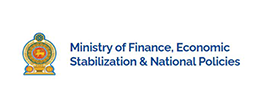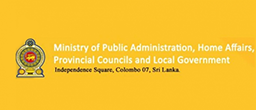Animal Disease Control
Sri Lanka is a country with widely extended livestock industry which provides livelihood to the significant proportion of the population in country.
The main types of the livestock in Sri Lanka are Cattle/buffalo, Poultry, Goat/sheep and Swine. The main livestock types, availability of the livestock, farming capacity and the farming type of the livestock in each area of the country are mainly based on the climatic zones and resources availability of the area. Health and production conditions of the livestock also have significant relationship with them. Therefore, the strength and concern on the prevention and control of the heath related issues of livestock in the country may vary with the influence of the multiple factors.
The disease surveillance, prevention and control programs have been designed and implemented successfully with the required timely modifications based on the prevailing disease situations of the country.
There are eight main disease control programs conducted by the Department of Animal Production and Health for Foot and Mouth Disease, Hemorrhagic septicemia, Black Quarter, Poultry Salmonellosis, Brucellosis, Bovine tuberculosis, Newcastle disease and Highly Pathogenic Avian Influenza. Due to the significant public health importance and possible huge economic loss of these diseases, surveillance programs, laboratory disease confirmation and disease control and preventive measures have been implemented in field level covering whole country.
- Foot and Mouth Disease (FMD) Control Program
Being an endemic disease to Sri Lanka, FMD plays a major role in production loss in dairy industry. With the aim of reducing the production and economic loss via improving immunity against the disease and farmer awareness, FMD control program has been implemented in Sri Lanka. Passive disease surveillance, disease confirmation and application of control and preventive measures are the main activities of the program. Vaccination to gain the herd immunity had been the major control and preventive measure of this program. Currently this program has been modified to vaccinate the susceptible animals to manage and seize the disease outbreaks. Under this program locally produced monovalent vaccine is used and the ring vaccination is done free basis for the cattle, buffalo and goats in the susceptible areas.
- Hemorrhagic Septicemia (HS) Control Program
Though Hemorrhagic Septicemia is not a common disease in Sri Lanka, it is endemic to certain districts in the country. In order to facilitate the disease detection via passive surveillance and laboratory diagnostics along with preventive measures to reduce HS disease prevalence in Sri Lanka, HS Control Program has been implemented and is conducted continuously. Under this control program, free vaccination of susceptible animals in identified risk spots is practiced annually. Farmer awareness and training programs are also conducted under this program with the purpose to strengthen the farmer awareness on rapid disease reporting and necessary bio-security measures.
- Block Quarter (BQ) Control Program
Black Quarter (BQ) disease also a less frequently reported disease in Sri Lanka with low disease prevalence. The control program is similar to the HS control program which includes passive surveillance, disease diagnosis and routine vaccination to prevent and control the disease. Locally produced vaccine is used for annual free vaccination of animals in identified risk areas of the country. Farmer awareness and training programs are also conducted under this program with the purpose to strengthen the farmer awareness on rapid disease reporting and necessary bio-security measures.
- Salmonella Control Program in Poultry
The program is consisted with continuous active surveillance program and aimed to control the host specific and non-host specific (zoonotic) Salmonella species in poultry and poultry originated food products. Salmonella in avian species (grandparent farms, breeder farms, commercial layer farms, commercial broiler farms, backyard poultry farms, pet bird establishments and hatcheries) are tested by various type of field and laboratory diagnostic methods in the accepted frequencies. Zoonotic salmonella species in poultry originated food products are tested bi-annually from the samples taken from registered Poultry processing establishments and commercial layer eggs.
- Newcastle disease Control Program in Poultry.
Aim of this program is to control the Newcastle disease in Sri Lanka and minimize the economic losses in the poultry industry. The active and passive surveillance of this program is conducted throughout the year including sampling, testing, disease control and prevention measures. Passive surveillance is based on reported clinical cases and active surveillance is based on the presence of various birds’ establishments and wild birds hotspots. All the samples are tested in Animal Virology Laboratory for disease confirmation and control measures are implemented based on this. Further, Newcastle disease preventive vaccination and farmer oriented bio-security training are also conducted under this disease control program.
- Highly Pathogenic Avian Influenza (HPAI) Surveillance Program.
Sri Lanka is a free country from HPAI. But, there is a high risk to introduce the disease into the country, as it has been a destination point for the many migratory bird species. Therefore, HPAI emergency preparedness plan has been implemented in Sri Lanka including continuous active surveillance covering all possible risk spots of the whole country. Epidemiological surveillance of and sero-serveillance are conducted with the aid of virus isolation and identification and ELISA techniques respectively. Communication of HPAI disease/free status with other relevant local authorities (Wildlife Department, Ministry of Health) also done under this program as a routine activity.
- Brucellosis Control program
Brucellosis Control Program is consisted with both active surveillance, passive surveillance and disease control activities. The program is aimed to minimize the Brucellosis prevalence in Sri Lanka gradually. Active surveillance program is a continuously expanding program which currently implemented only in three provinces of the country. All the milk collecting centers of these high prevalence provinces are tested annually for detect Brucellosis in raw milk and identify the disease infected farms indirectly. Passive surveillance is conducted in whole country based on the reporting of clinical cases. Field and laboratory diagnostic tests in VICs and confirmatory tests in VRI are performed to detect infected herds more accurately. Identified infected herds are vaccinated for S19 vaccine continuously for prevent the further spreading of the disease along with continuous farmer awareness on prevention of further spreading of the disease to other herds.
- Bovine Tuberculosis (bTB) Control Program
With the aim of reducing the bTB prevalence in Sri Lanka, bTB control program has been started and implemented in island wide. This program is consisted with active and passive surveillance programs and disease control activities. Active surveillance has been implemented in selected government and semi-government farms. Animals of these farms are subjected to annual field screening tests and identification of reactors. Passive surveillance is based on reporting suspected clinical cases. In order to reduce the bTb infected cattle population in country, necessary recommendations to eliminate the infected animals are given under this control program.





















